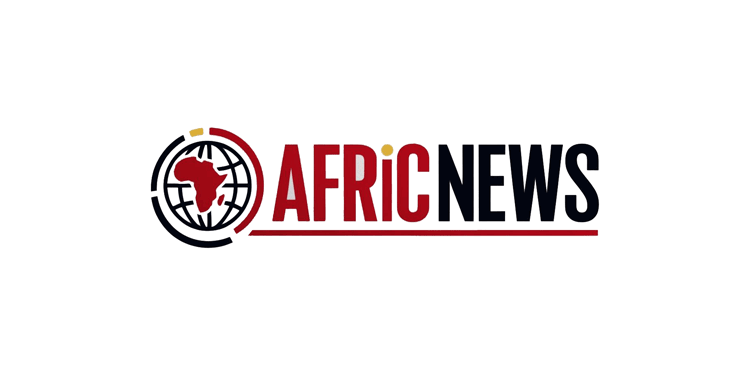Ethiopia, a nation steeped in a rich tapestry of cultures and ethnicities, has long grappled with the challenges of forging a cohesive national identity. Despite its deep-rooted historical significance, the country’s diverse population has often found it difficult to unite under a common banner, leading to conflicts and political tensions. At the heart of this struggle lies the Grand Ethiopian Renaissance Dam (GERD), a monumental engineering project poised to transform the nation’s economic landscape and potentially serve as a catalyst for unity. As Ethiopia confronts both the promise and peril of this ambitious endeavor, questions arise: can the GERD bridge divides and foster a sense of solidarity among its people, or will it exacerbate existing fractures? This article delves into the complexities of Ethiopia’s quest for national cohesion and examines the multifaceted role that the dam might play in shaping the future of this historically diverse nation.
Ethiopia’s Grand Renaissance Dam: A Catalyst for National Unity or a Source of Division?
The construction of Ethiopia’s Grand Renaissance Dam (GERD) is being heralded by many as a monumental project that has the potential to unify a nation grappling with internal divisions. As the largest hydroelectric power plant in Africa, the dam aims to generate over 6,000 megawatts of electricity, promising a brighter future for Ethiopia’s economy and potentially lifting millions out of poverty. The government presents the GERD not only as a tool for energy generation but also as a symbol of national pride and resilience. By rallying citizens around a common goal, the dam could foster a sense of belonging among Ethiopians, bridging regional and ethnic divides that have historically hindered social cohesion. This potential for unity is further amplified by the anticipated benefits of increased economic opportunities and improved living standards for many across the nation.
However, the project is not without its controversies, particularly with regard to its impact on downstream nations like Sudan and Egypt, leading to regional tensions that could counteract the unity it seeks to promote. Opponents argue that the dam threatens their water security, turning a symbol of national pride into a focal point of division that could exacerbate existing grievances both domestically and with neighboring countries. Key factors influencing the debate include:
- Environmental concerns related to water flow and agricultural output.
- Ethnic and religious diversity in Ethiopia complicating a cohesive national narrative.
- Perceptions of power dynamics and governance surrounding the dam’s management.
These contrasting narratives surrounding the GERD illustrate the complexity of its role in Ethiopia’s journey towards unity, suggesting that while it has the potential to unite, it may equally serve as a flashpoint for conflict if not managed inclusively and strategically.
Balancing Regional Interests: How the Dam Project Can Foster Cooperation Among Ethiopia’s Diverse Communities
As Ethiopia embarks on the ambitious dam project along the Blue Nile, it offers a transformative opportunity for fostering cooperation among the country’s diverse communities. The dam’s construction necessitates collaboration across regional lines, compelling various ethnic and political groups to come together for a common goal. By ensuring equitable access to resources, the project can potentially alleviate tensions and encourage dialogue, which is pivotal in a nation often divided by ethnic considerations. Key stakeholders, including community leaders and regional governments, must engage in meaningful discussions to ensure that the project benefits all involved. This could lead to the establishment of committees that reflect the interests of multiple communities, thereby promoting inclusivity and shared ownership of the project.
Moreover, the dam project can act as a catalyst for regional development initiatives, providing a framework through which historically marginalized communities can voice their needs and aspirations. By integrating local voices into the planning and implementation stages, the project can support sustainable livelihoods, enhance infrastructure, and improve access to education and healthcare. To illustrate the potential benefits, the following table summarizes key areas where regional cooperation can flourish:
| Benefit Area | Potential Impact |
|---|---|
| Infrastructure Development | Improved roads and transport links connecting communities |
| Job Creation | Employment opportunities for local populations in construction and maintenance |
| Access to Water | Enhanced irrigation systems for agriculture, benefiting farmers |
| Energy Generation | Affordable electricity for homes and businesses, fueling economic growth |
By emphasizing these areas of cooperation, the dam project has the potential to transcend ethnic and regional differences, fostering a sense of national unity that has been elusive in Ethiopia’s history. This collaborative spirit can also welcome external partnerships, encouraging foreign investment and support that could further solidify inter-community ties and usher in a new era of progress for all Ethiopians.
Strategies for Inclusivity: Recommendations for Leveraging the Dam’s Potential in Strengthening National Identity
To harness the immense potential of the dam as a tool for fostering national identity, several strategies should be prioritized. Engaging diverse communities in the planning and implementation phases can serve as a unifying force, allowing different ethnic and regional groups to see the dam as a shared resource rather than a point of contention. Collaborative dialogues should be initiated, focusing on the following elements:
- Community Engagement: Facilitate workshops and forums where local populations can express their views and contribute ideas regarding the dam’s benefits.
- Education and Awareness Campaigns: Implement initiatives that educate citizens about the dam’s positive impacts on national growth and development.
- Cultural Celebrations: Organize events that commemorate the dam’s inauguration, inviting representatives from all ethnic groups to participate, thereby fostering a sense of collective ownership.
Furthermore, establishing a transparent management framework that incorporates representatives from various communities will be essential in building trust and commitment. Such a framework should ensure that the benefits of the dam are equitably distributed, emphasizing social accountability. A multi-stakeholder oversight committee can be formed, comprising:
| Stakeholder Group | Role in Management |
|---|---|
| Local Communities | Voice concerns and needs regarding the dam’s operations. |
| Government Officials | Ensure policies align with national interests and equitable resource distribution. |
| NGOs | Provide oversight and advocate for environmental and social responsibility. |
By implementing these strategies, the national identity can be strengthened, transforming the dam from a potential flashpoint into a vibrant symbol of unity and progress for all Ethiopians.
Final Thoughts
In conclusion, the Grand Ethiopian Renaissance Dam represents more than just a monumental engineering achievement; it symbolizes a potential turning point in Ethiopia’s journey toward national unity. As the nation grapples with historical divisions and contemporary challenges, the dam offers a unique opportunity for collaboration, resource management, and economic growth. However, the path to unity will not be without its hurdles. Navigating intra-national tensions, environmental concerns, and regional relationships will require a concerted effort from all stakeholders. As Ethiopia moves forward, the success of the dam in fostering a cohesive national identity will depend on the government’s ability to harness its promise while addressing the legitimate concerns of diverse communities. The coming years will be crucial in determining whether this ambitious project can indeed bridge divides and cultivate a sense of shared purpose among the Ethiopian populace.







